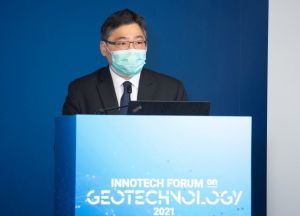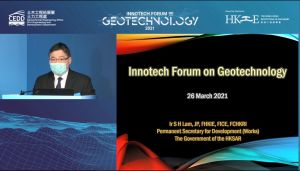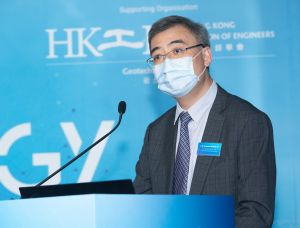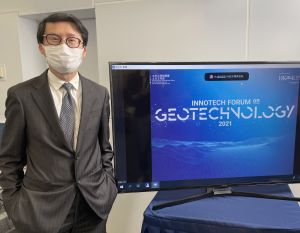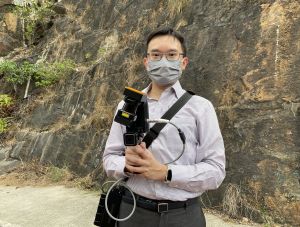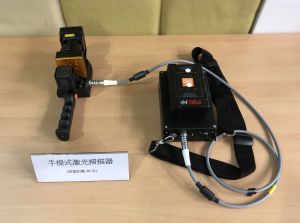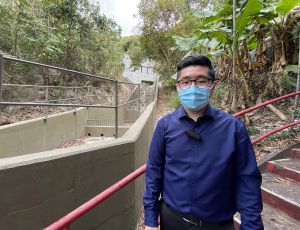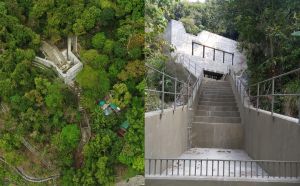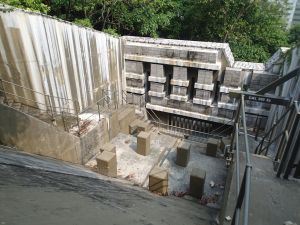Adoption of innovation and technology to enhance slope safety management
|
The Geotechnical Engineering Office (GEO) under the Civil Engineering and Development Department (CEDD) recently held the “Innotech Forum on Geotechnology”, providing a platform for industry practitioners to exchange views on the application of innovation and technology in geotechnical engineering. Although the forum had to be held via video conferencing due to the epidemic, it got the attention of about 1 000 participants including technology personnel, academics and industry practitioners from around the world. This time, I have specially invited colleagues of the GEO to tell us about the forum, and share with us how to adopt innovation and technology to enhance slope safety management for landslip prevention and mitigation. Highlight of the forum – Artificial Intelligence After the “Innotech Forum on Geotechnology” in 2018 and 2019, we organised the forum for the third time this year. Deputy Head of GEO (Island), Mr CHEUNG Ping-yip, says that the forum aimed at encouraging wider adoption of innovation and technology in the geotechnical engineering industry, with a view to enhancing productivity, uplifting quality and efficiency, and improving practitioners’ safety. One of the highlights of the forum was artificial intelligence (AI). As big data is the main driving force behind AI, the scale and speed of data release are crucial for Hong Kong’s development into a smart city. The GEO has already released 17 sets of spatial data for public use, including 3-dimensional (3D) laser remote sensing survey data, and data on registered man-made slopes and historical landslide catchments. Hot topic at the Forum – Robot dog Another hot topic at the forum was the GEO’s recent introduction of the robot dog developed by Boston Dynamics. Mr CHEUNG Ping-yip says that according to the presentation by the responsible person of the IT company at the forum, special mobility training is provided to the robot dog with AI to enable it to recognise the surroundings, avoid trees and other obstacles. With such functions, the robot dog can go deep into landslip sites or terrains that are difficult for works staff to reach for conducting surveys at rugged hillsides or under harsh environments. The robot dog is equipped with data collection equipment. Coupled with 5G transmission technology, the equipment can send real-time images taken onsite to engineers to facilitate data analysis, so that they can assess the risks of the slopes more quickly and formulate mitigation measures. Digital rock joint surveys Besides, through this forum, the GEO hopes to encourage the industry to use digital technology as its commonly used tool to carry out rock joint (i.e. gaps on rock slopes) surveys and analysis. According to Geotechnical Engineer of the GEO, Mr LEUNG Wai-kin, if a survey is conducted in a traditional approach, i.e. placing a compass close to a rock joint, vegetation on the rock slope needs to be cleared and temporary scaffolding needs to be erected before the survey can be carried out. Apart from the time and money that have to be spent, there are also safety concerns. Currently, there are many advanced remote sensing technologies that can be used to collect topographic data and provide information such as dip orientation and dip angle of rock joints. For example, by scanning with a handheld laser scanner or combining hundreds to thousands of photos through photogrammetry, a 3D digital model can be formed, with which a computer can be used to analyse the stability of a rock slope. This approach is more effective than the traditional survey method and can be done day or night, rain or shine. Automation of slope engineering design Regarding engineering design, Geotechnical Engineer of the GEO, Mr CHENG Ka-chun, Billy, says that the GEO proactively adopts Building Information Modelling (BIM) technology to enhance the accuracy, flexibility and efficiency of planning and design. Quoting a rigid debris-resisting barrier at Shek Pai Wan of Aberdeen as an example, he says that engineers can utilise a digital topographical model and geological data at the design stage to effectively carry out landslide risk assessment and landslide debris mobility analysis. Meanwhile, the GEO has developed a set of computer scripts to optimise the design layout and reduce the amount of earthwork automatically, so as to minimise the environmental and visual impacts due to the barrier. Mr Billy CHENG says that the digital and automatic design workflows can facilitate the understanding of the 3D site environment in advance. When design changes are needed during construction, such workflows, coupled with the Digital Twin technology, can enable engineers to revise the design quickly so as to achieve the objectives of optimising the design, improving the construction workflows, enhancing cost-effectiveness, etc. Adopting technology to enhance project efficiency The rainy season generally starts in April in Hong Kong, we will not underestimate the devastating effects of rainstorms and will continue to adopt innovation and technology to enhance the quality and economic efficiency of the design of landslip prevention and mitigation works. Also, private slope owners have the responsibility to maintain their slopes or retaining walls on a regular basis to keep hazards at bay. Furthermore, as mentioned in My Blog in the past two weeks, a number of colleagues, experts, stakeholders and I have participated in the production of the television programme “Searching For Land”. Episodes 11 to 15 were broadcast last week. In the episodes, the planning of the large-scale reclamation works in Tung Chung East and issues such as adoption of the latest environmentally-friendly reclamation technology and fill materials were introduced. You are welcome to click on the DEVB’s webpage on Thematic Clips to re-visit these episodes. |
11 April, 2021
Back